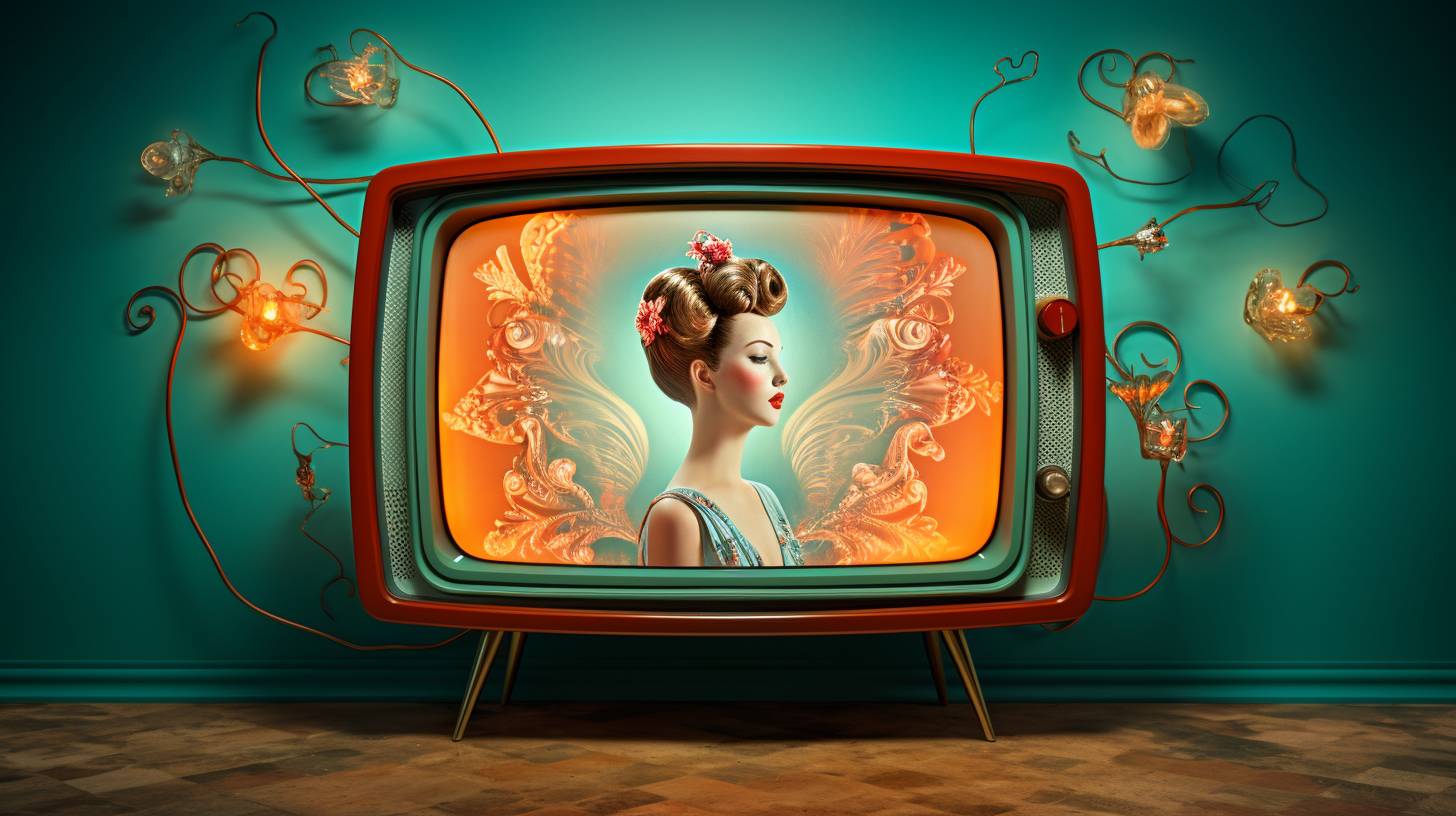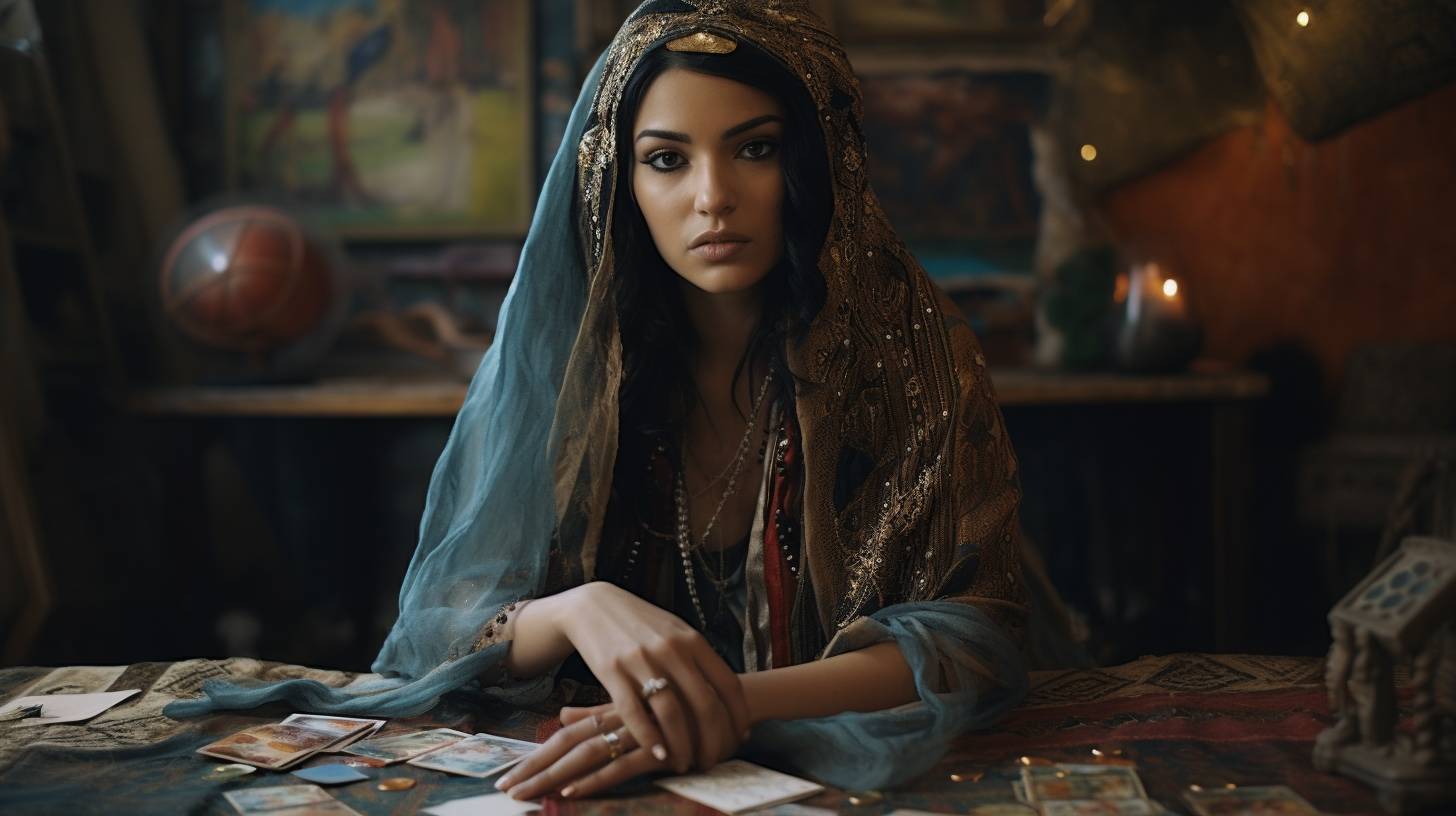Tarot in Pop Culture: Iconic Tarot Scenes in Movies and TV
The Art of Tarot in Film: A Cinematic Journey
Tarot’s Silver Screen Debut
You’ve seen tarot cards in music videos, fashion shows, and even celebrity Instagram feeds, but did you know that tarot has also made a splash in the world of cinema? From dramatic close-ups of the Death card to entire plotlines revolving around a tarot reading, filmmakers have long been fascinated by the art of tarot. Whether it’s used as a visual motif or a pivotal plot device, tarot adds a layer of intrigue and mysticism to any film. Let’s dive into the world of tarot in film and explore how this ancient practice has captivated the imagination of filmmakers and audiences alike.
More than Just a Prop
You might think that tarot cards are just a convenient prop for filmmakers, but there’s more to it than that. Tarot cards can be used to symbolize a character’s journey, reveal hidden emotions, or foreshadow future events. In fact, the symbolism and imagery of tarot cards can add depth and complexity to a film’s storyline. You’ve probably seen the iconic image of the Death card in a movie, but did you know that the Death card doesn’t actually mean physical death? It represents transformation and change, which can be a powerful metaphor for a character’s journey.
A Cinematic Journey through the Major Arcana
The Major Arcana is a set of 22 cards in the tarot deck, each representing a different archetype or stage of the human experience. Filmmakers often use the Major Arcana to explore the themes of their movies. For example, the Fool card represents new beginnings and taking a leap of faith, which could be used to symbolize a character’s decision to embark on a new adventure. The Lovers card represents choices and relationships, which could be used to explore a character’s romantic dilemmas. By incorporating the symbolism of the Major Arcana, filmmakers can add layers of meaning and depth to their movies.
Tarot in the Hands of Iconic Filmmakers
Some of the most iconic filmmakers in cinema history have dabbled in the art of tarot. Directors like Federico Fellini and Alejandro Jodorowsky have used tarot cards to explore the inner workings of their characters and the human psyche. In Fellini’s film 8½, a tarot reading is used to explore the protagonist’s creative block and inner turmoil. Jodorowsky, who is also a tarot expert, has used tarot symbolism in many of his films, including The Holy Mountain. These filmmakers show that tarot is more than just a prop; it’s a tool for exploring the human experience.

TV Shows That Accurately Depict Tarot Readings
Tarot’s Prime-Time Moment
You’ve seen tarot cards in movies and pop culture, but did you know that TV shows are also embracing the world of tarot? With the growing popularity of tarot, it’s no surprise that TV shows are incorporating tarot readings into their storylines. From dramatic reveals to heartfelt guidance, tarot readings are adding a touch of mysticism to the small screen. But not all TV shows get it right. Let’s explore some TV shows that accurately depict tarot readings and celebrate the mystical art of tarot in prime-time television.
“Penny Dreadful” – A Victorian Tarot Reading
In the dark and moody TV series “Penny Dreadful,” the character Vanessa Ives, played by Eva Green, is a gifted medium and witch. Throughout the series, she performs several tarot readings that are rich in symbolism and atmosphere. What makes these readings so accurate is the attention to detail in the card interpretations and the authentic Victorian setting. You can see the character’s deep connection to the cards and the energy in the room. If you’re a fan of gothic horror and tarot, this show is a must-watch.
“Good Witch” – Tarot in a Wholesome Light
The TV series “Good Witch” is known for its heartwarming stories and magical elements. One of the characters, Cassie Nightingale, often uses tarot cards to offer guidance and insight to the residents of Middleton. What’s refreshing about this show is the positive portrayal of tarot readings. The cards are used as a tool for self-reflection and empowerment, rather than a source of fear or foreboding. The readings are accurate and focus on the deeper meanings of the cards, making it a great show for tarot enthusiasts.
“The Chilling Adventures of Sabrina” – A Tarot-Filled Adventure
In the Netflix series “The Chilling Adventures of Sabrina,” tarot readings play a significant role in the storyline. The character Aunt Zelda, a powerful witch, often uses tarot cards to gain insight into the challenges faced by Sabrina and her friends. The readings are done with a traditional Rider-Waite deck, and the card interpretations are spot on. The show does a great job of showcasing the complexity and symbolism of the tarot cards. If you’re a fan of dark fantasy and tarot, this show is definitely worth a watch.

Tarot’s Role in Shaping Character Arcs and Plots
Tarot Cards as Plot-Driving Tools
If you’re a fan of storytelling, you’ve probably noticed the intriguing presence of tarot cards in many books, movies, and TV shows. These mystical cards often serve as powerful plot-driving tools that can shape character arcs and create captivating narratives. You may have even experienced the suspense of a tarot reading that foreshadows a character’s future or reveals hidden truths. Let’s dive into how tarot cards play a pivotal role in shaping character arcs and plots in the world of fiction.
Unveiling Hidden Desires and Motivations
Tarot readings can be a fantastic way to explore a character’s hidden desires, motivations, and fears. You might recall a scene where a character receives a tarot reading that brings to light a deep-seated longing or an unspoken fear. By revealing these inner struggles, tarot cards can provide a fresh perspective on a character’s journey and open up new avenues for character development. So next time you see a tarot reading in a story, pay close attention to how it reveals the layers of the character’s emotions and drives the plot forward.
Foreshadowing and Shaping Character Arcs
Tarot cards are known for their prophetic nature, and their presence in a story often hints at a significant turn of events. You may have come across a scene where a character receives a reading that foretells a momentous event or a pivotal choice. These foreshadowing moments can create a sense of anticipation and excitement, making you eager to see how the story unfolds. By offering glimpses into a character’s future, tarot readings can shape character arcs and set the stage for transformative experiences.
Creating Dynamic and Engaging Plots
Tarot cards are not just tools for character development; they also serve as powerful devices for creating dynamic and engaging plots. The intricate symbolism and layered meanings of the tarot cards can add depth and nuance to a storyline, making it more compelling and thought-provoking. You might remember a moment when a tarot reading turned the tide of a plot, leading to unexpected twists and turns. By introducing elements of mystery, suspense, and introspection, tarot cards can elevate a plot and keep you hooked till the very end.

Tarot Tropes: Decoding the Symbolism Behind Famous Tarot Scenes
The Allure of the Tarot
When you think about tarot in popular culture, a few iconic scenes might come to mind. Maybe it’s the mysterious woman in a dimly lit room, shuffling a deck of cards while a nervous protagonist looks on, or perhaps it’s the ominous death card making an appearance just before a major plot twist. You’ve seen these tarot tropes in movies and TV shows countless times, but do you know the symbolism behind them? Let’s dive into the deeper meanings of some of the most famous tarot scenes in popular culture.
The Mysterious Tarot Reader
In many stories, the tarot reader is depicted as a mystical figure who holds the key to the protagonist’s future. You might recall scenes where the reader flips over a card and reveals a cryptic message that sets the stage for the rest of the plot. This trope speaks to the allure of the unknown and the idea that fate can be revealed through a deck of cards. While it might seem mysterious and otherworldly, the tarot reader’s role is to offer insight and guidance, helping the protagonist navigate their journey.
The Ominous Death Card
The death card is one of the most infamous tarot tropes in popular culture. You’ve probably seen scenes where the card is revealed, and everyone gasps in fear, anticipating doom and gloom. But did you know that the death card isn’t necessarily a bad omen? In fact, it often symbolizes transformation and change. So next time you see the death card make an appearance in a story, pay attention to the shifts and transformations that follow. You might find that the card’s true meaning is far more nuanced than it appears.
The Lover’s Choice
Another popular tarot trope is the lover’s choice, where the protagonist must choose between two potential romantic interests. You may recall scenes where the protagonist is torn between two lovers, and the tarot cards offer guidance. This trope speaks to the complexity of love and the choices we face in our romantic lives. While it might seem like a cliché, the lover’s choice is a reminder that love is never straightforward, and the heart often wants what it wants, regardless of logic or reason.
The Tower of Change
The tower card is another iconic tarot trope that often signals a major upheaval or disruption. You might remember scenes where the tower card is revealed, and the protagonist braces themselves for impact. While the tower card can signify chaos and disruption, it can also represent a necessary shake-up that leads to growth and transformation. So next time you see the tower card in a story, take a moment to consider the positive changes that might come from the upheaval. You might find that the card is a symbol of hope and renewal.
